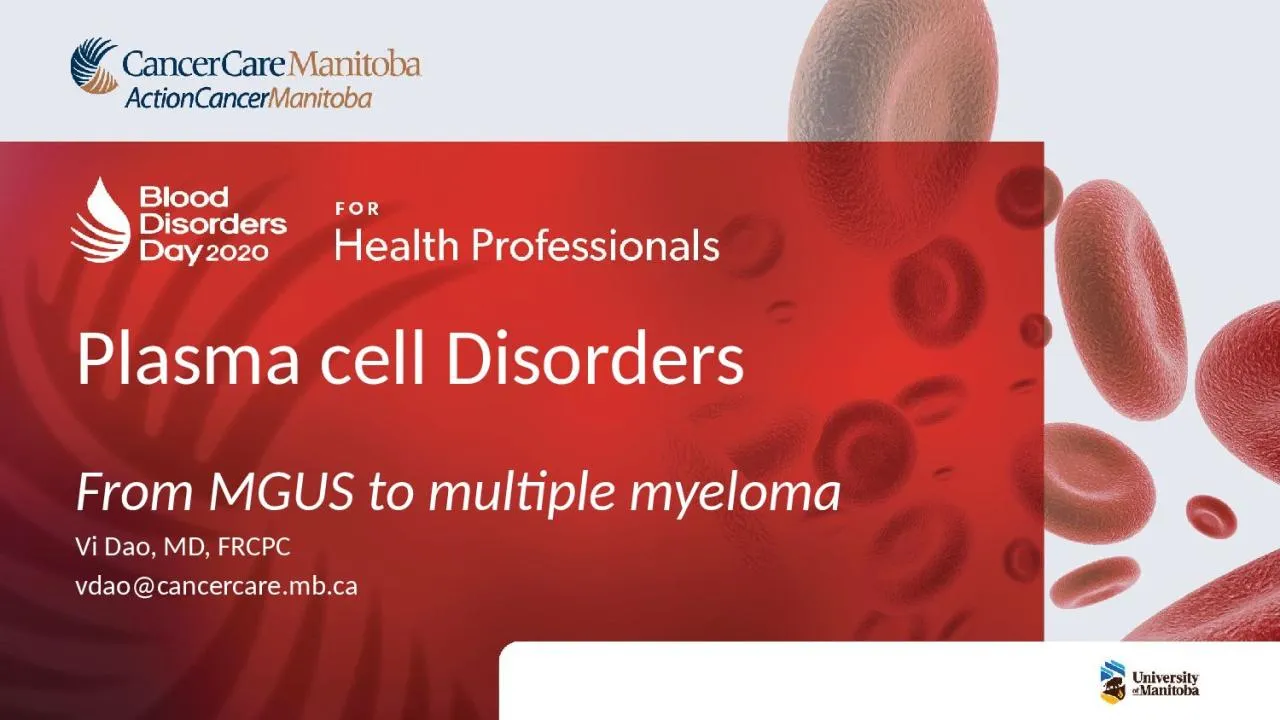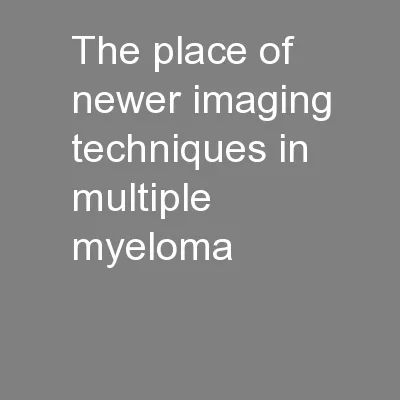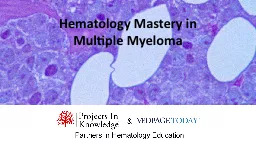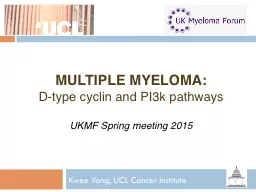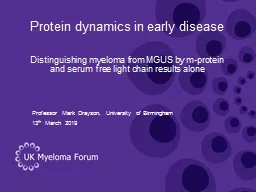PPT-Plasma cell Disorders From MGUS to multiple myeloma
Author : susan2 | Published Date : 2022-06-01
Vi Dao MD FRCPC vdaocancercarembca Presenter Disclosure Faculty Vi Dao Relationships with commercial interests none Mitigating Potential Bias Not Applicable Learning
Presentation Embed Code
Download Presentation
Download Presentation The PPT/PDF document "Plasma cell Disorders From MGUS to multi..." is the property of its rightful owner. Permission is granted to download and print the materials on this website for personal, non-commercial use only, and to display it on your personal computer provided you do not modify the materials and that you retain all copyright notices contained in the materials. By downloading content from our website, you accept the terms of this agreement.
Plasma cell Disorders From MGUS to multiple myeloma: Transcript
Download Rules Of Document
"Plasma cell Disorders From MGUS to multiple myeloma"The content belongs to its owner. You may download and print it for personal use, without modification, and keep all copyright notices. By downloading, you agree to these terms.
Related Documents

